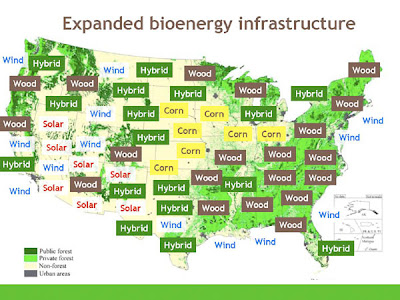Bioenergy's "Top Five" List.

From a speech delivered at the Capitol Hill Club in Washington DC on November 28, 2007.
Besides writing blogs, I am a Communications Director* of the Biomass Coordinating Council (BCC) of the American Council on Renewable Energy (ACORE). ACORE is a Washington-based advocacy association that promotes all renewable energy forms. The BCC, led by the intrepid Bill Holmberg, focuses attention on bioenergy technology, as well as environmental and economic sustainability issues.  America is still the “Can do” leader of the world. It is heartening to travel to recent national and international conferences, expos, and workshops to sense the excitement and see the vision that researchers, government agencies, technologists, and investors are proposing as we face the daunting challenges of the new millennium.
America is still the “Can do” leader of the world. It is heartening to travel to recent national and international conferences, expos, and workshops to sense the excitement and see the vision that researchers, government agencies, technologists, and investors are proposing as we face the daunting challenges of the new millennium.
It is time to assess bioenergy’s attributes to see how they fit into the renewable energy paradigm shift sweeping the nation.
We need to help American business, community, educational, state, and federal leaders to understand the opportunities these attributes represent. Doing so will not only raise awareness of bioenergy, but also help persuade policy makers to ACT NOW to support our critically important research, development, and deployment with new policies, loan guarantees, and incentives.
The five key messages are:
1. Bioenergy can convert solar energy into liquid fuel.
2. Bioenergy can reduce greenhouse gas emissions.
3. Bioenergy can remediate ecological disasters.
4. Bioenergy can revive depressed economies.
5. Bioenergy can expand energy freedom of choice.
Each message above is linked to article that briefly outlines how bioenergy is able to accomplish these socially beneficial actions. They are at the heart of what motivates leaders from all walks of life to get involved in the most significant paradigm shift of our time.
*In the interest of full disclosure, I am also a Marketing Consultant for Price BIOstock Services - the logistics support company responsible for procuring, delivering, and preparing woody biomass to paper and pulp mills and biorefineries – like Range Fuels’ landmark cellulosic ethanol biorefinery in Georgia.
technorati BIOconversion, bioenergy, biofuels, legislation




































